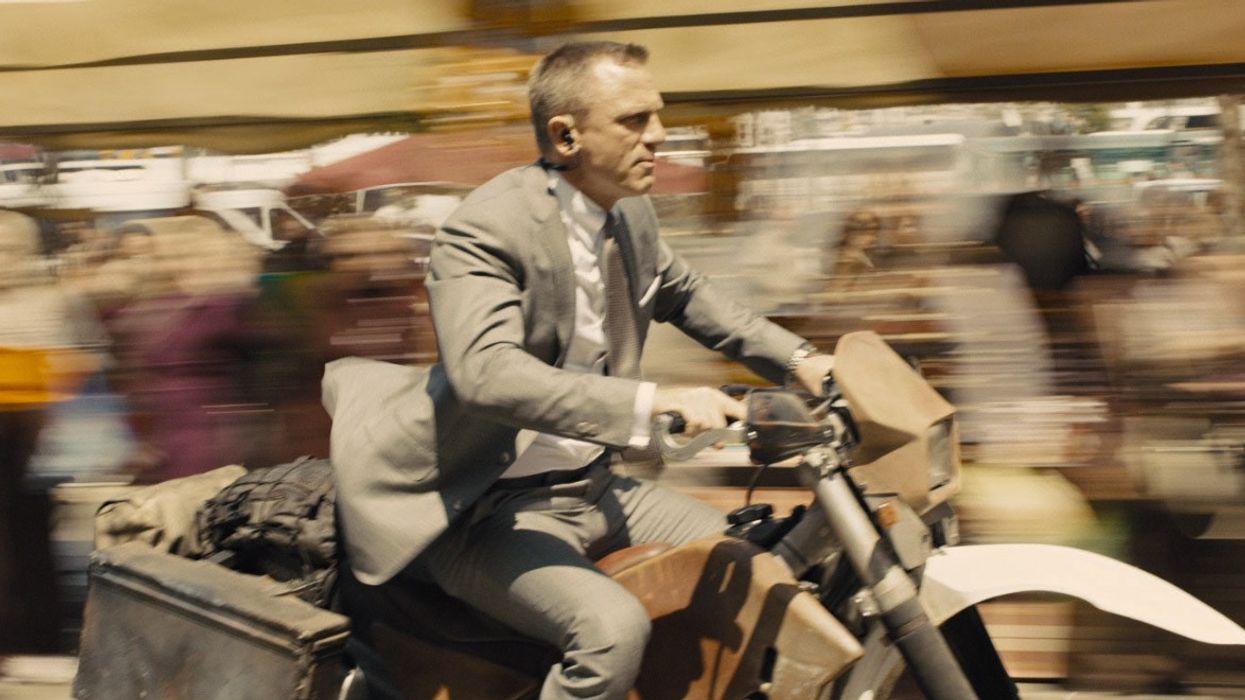Drone Cinematography 101: What You Need to Know From the Pros
Before you start flying, get vital information about drone usage and federal regulations from veteran drone pilots and industry professionals.

The emergence of drones has raised the bar for cinematic quality and visual storytelling for indie filmmakers, and with their cost getting lower and lower, more of us can get our hands on them to capture stunning visuals.
At WeWork Penn Station in New York City, Candy Factory Films hosted a panel detailing the ins and outs of using drones on set. Panelists included Jimmy Olivero of SkyCamUSA, Edward Kostakis of Xizmo Media, Robert Pascale of Pond5 and Jason Ward of Candy Factory. Here are some takeaways from their informative discussion.
1. Drones can be used for more than establishing shots
When we think about drone footage, establishing shots immediately come to mind. Sprawling cities and miles of forest look great, but drone usage is not limited to establishing shots. “We have to use the same techniques cinematographers use to tell their stories,” said Pascale. As we see in these blockbusters, drones can be used for reveals, tracking and other creative shots. In fact, the opening scene of Skyfall was shot using drones. Watch as 007 chases a terrorist across rooftops on a motorbike:
“One of the greatest things about using a drone is the budget.”
2. Drones can save you money
Creators on all levels can agree that budget is always a concern. Not only can drones eliminate other expensive tools such as cranes, jibs, and tracks, but they can make it much easier to capture some of your shots as they don’t take up the same amount of space as some of your more traditional tools. Avoiding traditional cranes and jibs may also save on set up time…and time is money.
3. Don’t let drones dictate the story
Drones are exciting tools to use on set, but certainly can be overused. Make sure you stay true to your story first, and if a scene can be enhanced by the use of a drone–go for it!
“The drone is a tool. It’s an instrument. Your imagination drives that tool.”
4. Leave extra prep time
“Drone shooting should be carefully planned,” Olivero advised. Your drone operator needs time to mount, test and shoot with the camera/drone combination 24-48 hours prior to the shoot. This will ensure a smoother shoot on the actual shoot day.
“The more complicated the camera, the more time you’re going to need to set up,” said Kostakis. While some drones like the Phantom 4 may take only a few minutes to set up, preparing a Red, Arri or some other camera can take up to a full day. Give yourself or your drone operator ample time to properly set up and test the equipment. It will save you time and money in the long run and, ultimately, create a better product.

5. Stay on top of ever-changing regulations
The FAA was not ready for the drone explosion happening in today’s film industry, and therefore laws for drone usage are in constant flux. You currently need a pilot license in order to legally operate a drone. There’s legislation (Part 107) passing in August that will allow those without a pilot license to take a qualifying test that, upon passing, will allow them to legally fly drones for commercial video purposes.
Getting cleared by the FAA doesn’t automatically mean you’re free and clear to fly anywhere you want. It’s highly suggested that you speak to the local precinct in your area for police clearance as the FAA and police department are not in communication with each other. You don’t want to fill out all that paperwork and pass that test only to have your gear taken by local police.
Now that you've got the basics, learn about some of this year's latest drone models here, and Happy Droning!












